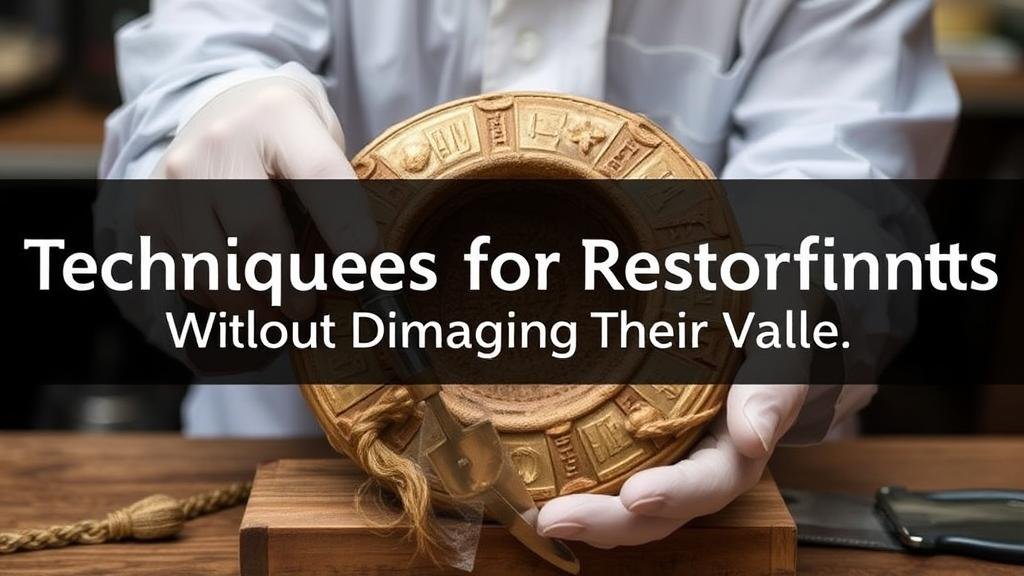Techniques for Restoring Artifacts Without Damaging Their Value
Techniques for Restoring Artifacts Without Damaging Their Value
In the field of art conservation, the restoration of artifacts presents a unique challenge; conservators must effectively balance the need to preserve historical integrity with the desire to make items aesthetically pleasing. The importance of using appropriate techniques to restore artifacts cannot be overstated, as improper restoration can lead to irreparable damage and a loss of value. This article explores effective techniques to restore artifacts while safeguarding their historical and monetary significance.
The Principles of Artifact Restoration
Before diving into the specific techniques, it is essential to understand the fundamental principles guiding the restoration process. e principles include:
- Minimal intervention: Restorers should aim for the least invasive approach, ensuring that changes are reversible whenever possible.
- Authenticity: The goal is to retain the artifacts original characteristics, both visually and materially.
- Documentation: Every step of the restoration process should be meticulously documented to provide a clear history of interventions.
Adhering to these principles protects the artifact and its provenance, thereby preserving its historical and market value.
Techniques for Restoration
1. Cleaning and Surface Restoration
One of the first steps in artifact restoration is cleaning. Depending on the material–be it wood, metal, or textiles–the cleaning process varies significantly. For example, in textile restoration, conservators might use specialized vacuum techniques to remove dust without risking fiber damage. According to the American Institute for Conservation, 80% of the dirt in the textile may be removed with appropriate vacuuming methods.
Another critical aspect of surface restoration is applying protective layers that do not alter the artifacts appearance. For example, using non-yellowing varnishes on paintings can enhance their visual appeal while maintaining the original artwork underneath. Such protective measures allow for long-term preservation without compromising integrity.
2. Repairing Structural Damage
Artifacts often suffer from structural damage due to age, environmental factors, or mishandling. Repair techniques must be chosen carefully. For ceramics, conservators often use reversible adhesives such as methyl cellulose. This type of adhesive allows repairs to be made without permanently altering the original material. In fact, a case study involving ancient Greek pottery displayed the successful use of these adhesives to restore fragments while ensuring that the materials could be safely separated in the future if necessary.
3. Color Matching and Aesthetic Restoration
Aesthetic restoration is particularly sensitive, as it involves reestablishing the visual coherence of an artifact without misleading viewers about its age or authenticity. Techniques such as inpainting, which involves adding color to degraded areas using water-soluble paints, can be effective. But, color matching needs to be undertaken cautiously–using a palette that reflects the artifacts original hues and saturation without overshadowing the objects historical context.
For example, the restoration of frescoes in Pompeii utilized a unique approach where conservators blended new pigments with existing colors, creating a seamless transition of hues that appeared consistent with the original work. This method preserves the dynamic quality of the frescoes while maintaining their historical integrity.
4. Environmental Control
Many artifacts suffer from environmental stressors such as humidity, light, and temperature fluctuations. The use of climate-controlled environments is crucial in the preservation of sensitive items. For example, museums that showcase ancient manuscripts often employ high-tech humidity and temperature monitoring systems to ensure optimal conditions, which may involve maintaining relative humidity levels between 30-50% and temperatures around 70°F. These measures help to considerably extend the lifespan of artifacts, as excessive moisture can lead to mold and deteriorate paper or parchment.
Case Studies: Successful Restoration Examples
Real-world applications of these techniques highlight their effectiveness:
- The Mona Lisa: Restoration techniques used on this iconic painting have focused on minimally invasive cleaning and the careful monitoring of environmental conditions to preserve its value.
- The Rosetta Stone: Conservators employed cleaning methods that removed corrosive substances without compromising the stones inscriptions, ensuring that its historical significance remained intact.
Conclusion and Actionable Takeaways
In the realm of art restoration, employing the right techniques is critical in preserving artifacts without damaging their value. By adhering to foundational principles such as minimal intervention and authenticity, professionals can implement effective techniques ranging from careful cleaning to Structural repairs and environmental controls.
For institutions and individual collectors alike, understanding these techniques is vital. Taking proactive measures, such as regular professional assessments and employing environmental controls, can greatly enhance the longevity and value of precious artifacts. Ultimately, making educated decisions in restoration processes ensures that historical treasures continue to educate and inspire future generations.



